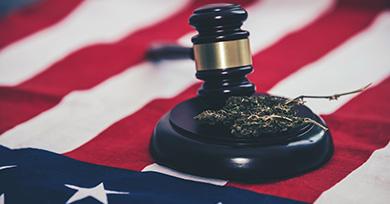Breadcrumb
- Home
- Search a publication
- Cannabis regulations in the United States
Although cannabis is still prohibited at federal level, 8 American states and the District of Columbia have made unprecedented changes to their cannabis regulations with the legalisation of cultivation, sale, possession and use of cannabis for non-medical (i.e. recreational) purposes from the age of 21.

These changes in the legal status of "recreational" cannabis have arisen even though "medical" use is already permitted in 29 states.
Hence, in the third most populated country in the world, one in five inhabitants is currently (or will be) experiencing a legal regime authorising the purchase and use of cannabis for recreational use by adults (i.e. 65 million citizens).
The initial initiatives for legalisation were approved via voter initiatives in 2012, in 2 Western states (Colorado and Washington State), then in 2014 in Oregon, Alaska and Washington DC. At the same time as the presidential election on 8 November 2016, 4 new states (California, Maine, Massachusetts and Nevada) followed. Legalisation in California, the most populous state and the sixth leading economic power worldwide, highlights the scale of this trend.
This memo describes the regulatory models instituted in the American states in which cannabis has been legalised, highlighting both the similarities and differences in the regulations. It then examines the processes and common features of legalising states.